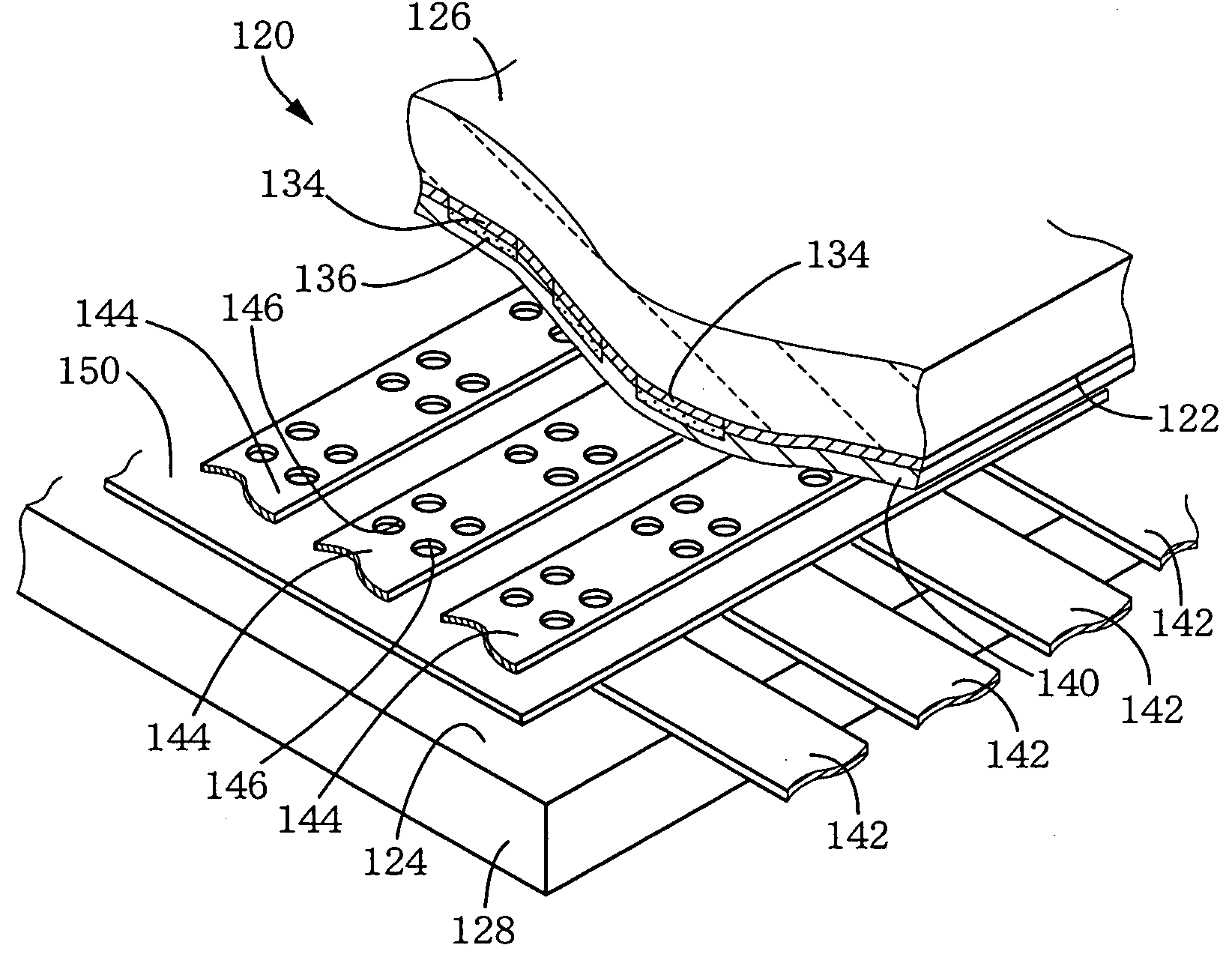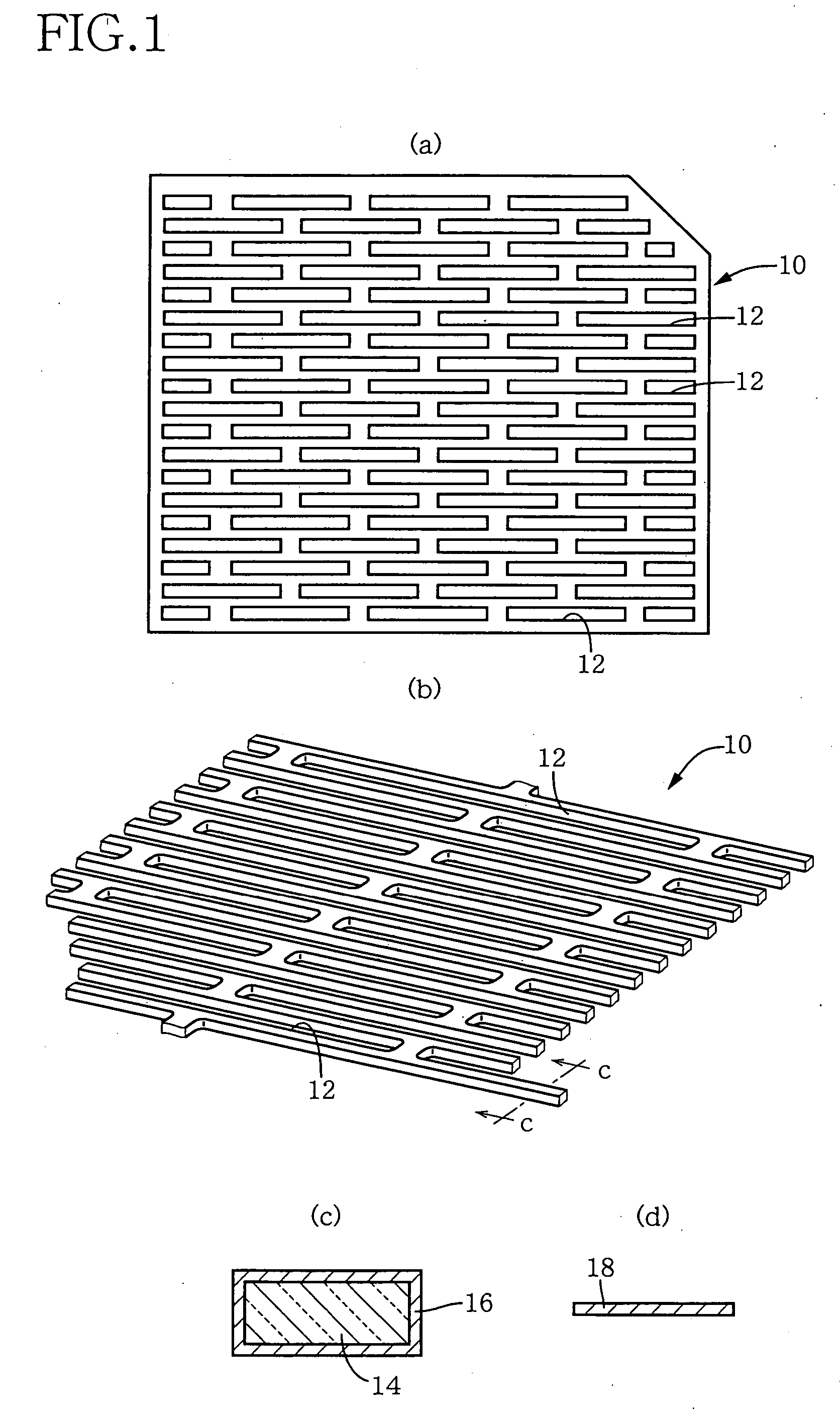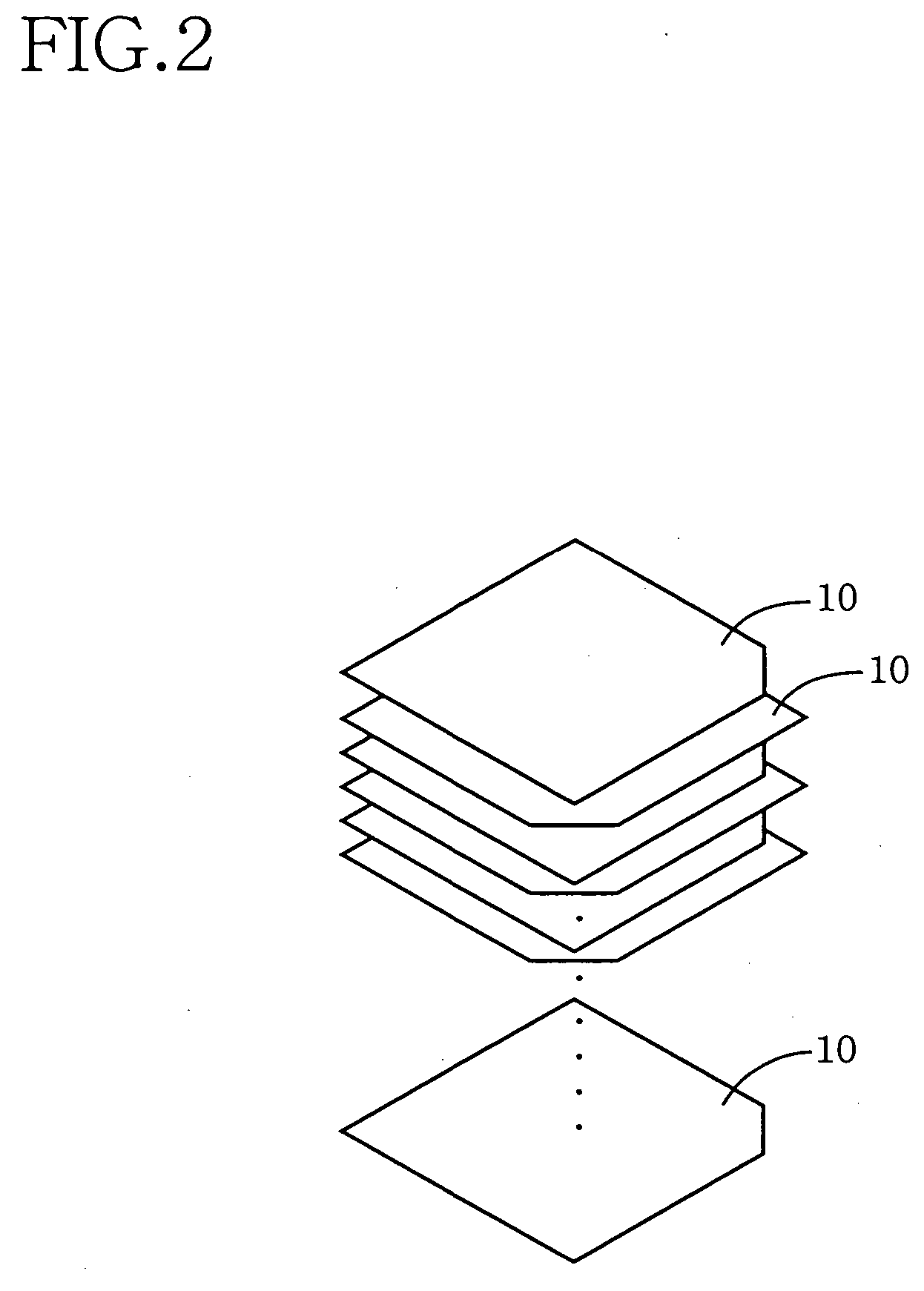Thick-film sheet member its applied device and methods for manufacturing them
a thin film, sheet member technology, applied in the manufacture of electrode systems, tubes with screens, electric discharge tubes/lamps, etc., can solve the problems of difficulty in handling sheet members in the production process, one of the producing methods requires a large-scale installation, and the thickness of conventional sheet members is limited, etc., to achieve the effect of high degree of freedom, easy handling and easy formation
- Summary
- Abstract
- Description
- Claims
- Application Information
AI Technical Summary
Benefits of technology
Problems solved by technology
Method used
Image
Examples
third embodiment
[0197]FIGS. 9 and 10 are a process chart for explaining another example of the method of producing the sheet member of the present invention, and a view illustrating main stages of the producing method, respectively. In the present embodiment, a patterning step 92 is provided between the thick-film-paste-layer forming step 36 and the drying step 46. FIG. 10(a) is a view showing a state after implementation of the thick-film-paste-layer forming step 36. As shown in this figure, a thick-film paste layer 94 is formed in a simple solid form without being particularly patterned. The thick-film paste layer 94 is constituted by a photosensitive resin, and is formed with, for example, a coater, film laminate or the like.
[0198] In the subsequent patterning step 92, the thick-film paste layer 94 is subjected to an exposure treatment by using an exposure mask 96 having a predetermined pattern, and is then subjected to a washing or other processing. FIG. 10(b) shows a state during the exposure...
fourth embodiment
[0199] FIGS. 11(a)-(c), corresponding to FIGS. 4(c)-(e), are views for explaining a case where a raw ceramic sheet 100 is used as the support body. In the present embodiment, the printed dielectric layer 42 and printed conductive layer 44 are formed by applying the thick-film paste onto a surface 102 of the raw ceramic sheet 100. The raw ceramic sheet 100 on which the printed layers 42, 44 are disposed is introduced into the furnace chamber 50, so that the raw ceramic sheet 100 is subjected to a firing treatment while being mounted on a setter 104. As a result of the firing treatment, the thick-film sheet (the thick-film dielectric layer 52 and thick-film conductive layer 54) is mounted on the setter 104 with the particle layer 58 being interposed between the thick-film sheet and the setter 104. As long as there is no particular problem as to the surface state and reactivity of the setter 104, the thick-film sheet 10 can be thus produced. Needless to say, it is also possible to fire...
fifth embodiment
[0201]FIG. 13 is a perspective view partially in cross section of a FED 120 which is one example of a cold-cathode display device of a fourth invention. The FED 120 is produced with a production process to which a producing method of a fifth invention is applied. The FED 120 is equipped with front and back face plates 126, 128 which are substantially identical with each other in size and shape and which are disposed in parallel with each other with a predetermined spacing distance therebetween such that their respective substantially flat surfaces 122, 124 are opposed to each other. The front and back face plates 126, 128 are gas-tightly sealed at their respective peripheral portions, whereby a gastight space is formed in their inside. This gastight space is adapted to be evacuated have a reduced pressure of about 6.7×10−5 (Pa) [5×10−7 (Torr)]. In the present embodiment, the back face plate 128 corresponds to a first substrate while the front face plate 126 corresponds to a second s...
PUM
| Property | Measurement | Unit |
|---|---|---|
| thickness | aaaaa | aaaaa |
| temperature | aaaaa | aaaaa |
| conductive | aaaaa | aaaaa |
Abstract
Description
Claims
Application Information
 Login to View More
Login to View More - R&D
- Intellectual Property
- Life Sciences
- Materials
- Tech Scout
- Unparalleled Data Quality
- Higher Quality Content
- 60% Fewer Hallucinations
Browse by: Latest US Patents, China's latest patents, Technical Efficacy Thesaurus, Application Domain, Technology Topic, Popular Technical Reports.
© 2025 PatSnap. All rights reserved.Legal|Privacy policy|Modern Slavery Act Transparency Statement|Sitemap|About US| Contact US: help@patsnap.com



